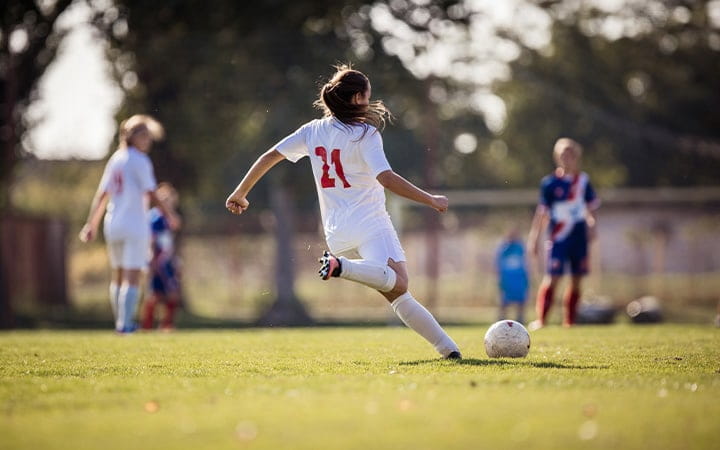The Benefits of Being a Multi-Sport Athlete for Kids
March 21, 2024
 University Hospitals Rainbow Babies & Children'sExperts in Children's Health
University Hospitals Rainbow Babies & Children'sExperts in Children's Health

With a young athlete who excels at a particular sport, there often is temptation to commit to that sport only, which sometimes means training and participating year round.
But young athletes benefit physically and mentally by participating in different sports in different seasons, with time off for rest.
Playing different sports makes for a more well-rounded athlete and also reduces risk of psychological stress, burn-out and overuse injuries, says University Hospitals orthopedic surgeon Jacob Calcei, MD.
Dr. Calcei says specializing in one sport doesn’t necessarily enhance performance in that sport, or lead to athletic scholarships.
“A lot of the best athletes in pro sports and at the college level played multiple sports in high school,” Dr. Calcei says. “Diversifying makes you a better, more well-rounded athlete, and makes you better at your primary sport.”
Risk of Overuse Injuries
Increased training and competition associated with sports specialization at an early age is a major concern. Young athletes need time off so their bodies can recover, but they often don’t get it.
“Athletes at the highest level get an off-season to rest and recover, and it’s important that our young athletes have time to rest and recover as well,” Dr. Calcei says.
A 2020 study in the Orthopaedic Journal of Sports Medicine found that athletes between 7 and 18 years old, particularly female athletes, are at higher risk for overuse injuries if they specialize in a single sport. Injury risk corresponded with hours spent training and performing.
Overuse injuries can impact bones, muscles, tendons and ligaments. The risk of these injuries can be decreased by diversifying sports and allowing proper rest and recovery, Dr. Calcei says. Sports specialization is especially risky in children younger than high school age, whose bones are still developing.
“Once you’re at the high school level it’s safer, but it still leads to increased risk of injuries and it doesn’t necessarily benefit athletic performance.”
Another study in 2019 noted that injury risk depends on the type of sport and level of specialization. Kids participating in Individual sports such as gymnastics and tennis are more likely to be highly specialized at younger ages than kids in team sports. The individual sports require higher levels of training and likely carry higher risk of overuse injuries.
But team sports such as baseball also feature early specialization, which has led to a rash of elbow and shoulder injuries from excessive throwing, Dr. Calcei says.
A rise in baseball overuse injuries led to the Ohio High School Athletic Association in 2017 to regulate pitch counts (125 pitches a day maximum) and days off between pitching appearances.
Risk of Burn Out
In the long run, rather than leading to scholarships and pro sports, intensive specialization drives a lot of young people to quit.
“We love sports and they play a big role in a young person’s life,” Dr. Calcei says. “But you don’t want kids to lose the joy. Making sports fun, something they enjoy and want to keep doing is important. Making it a chore is not fun, and it poses physical, mental and emotional risks.”
Playing different sports also has social benefits. Kids bond with a more diverse groups of peers, experience different coaches and learn to play different roles on a team.
Related Links
The pediatric sports medicine experts at University Hospitals Rainbow Babies & Children’s are dedicated to treating athletes of any age – from toddlers to adolescents and young adults.


